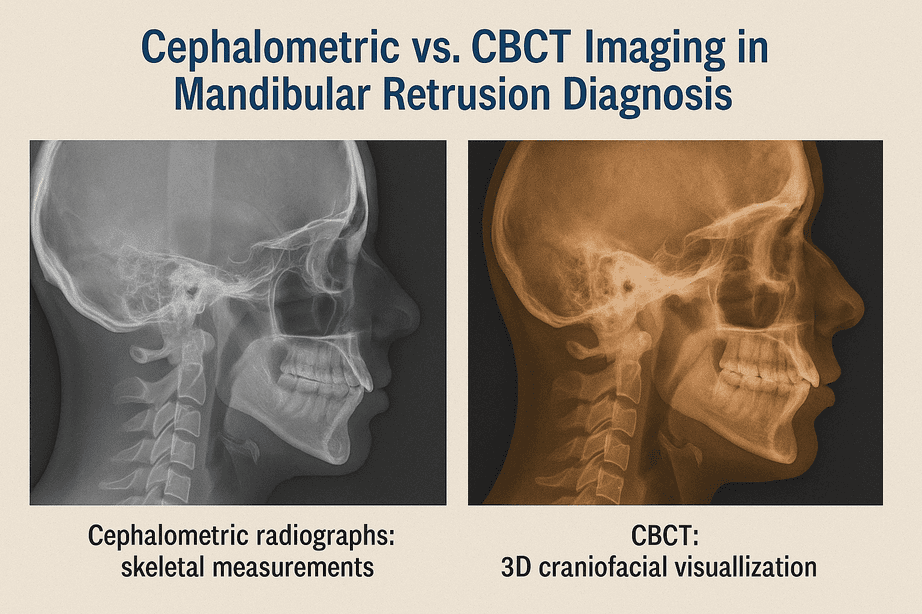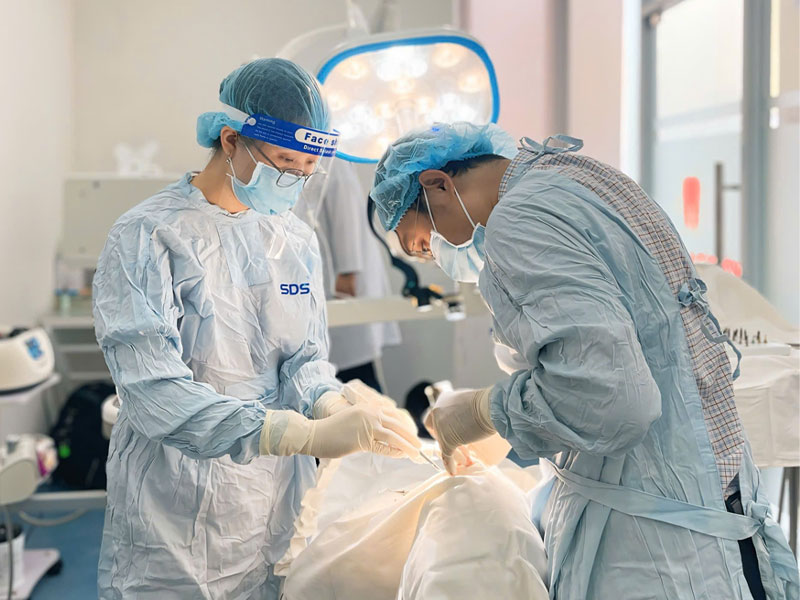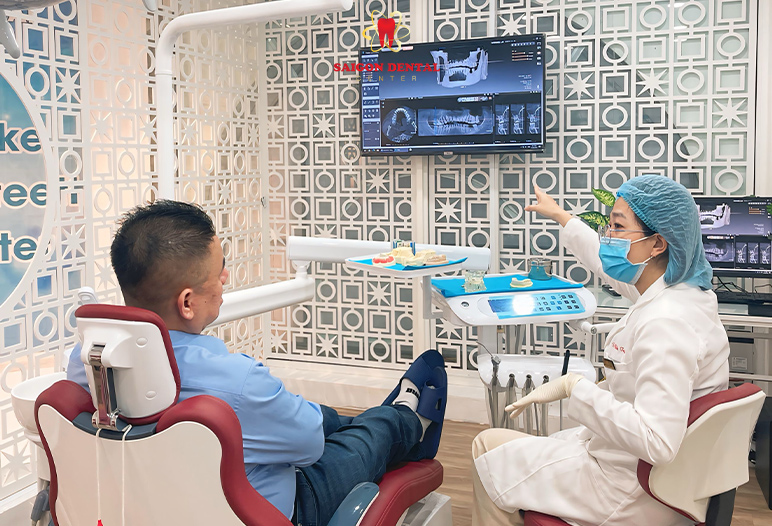Receding chin, also known as a retruded jaw or micrognathia, is a condition that can significantly influence both facial aesthetics and oral health. This comprehensive article delves into the intricacies of receding chin, exploring its underlying causes, current treatment options, and emerging technological advancements shaping its future. From understanding how this condition impacts daily life to examining innovative solutions such as personalized 3D treatments, we aim to provide a detailed guide for those seeking insights into this common yet complex issue.
Understanding receding chin – Causes, impacts, and diagnostic methods
A receding chin is more than a cosmetic concern; it often signals deeper structural or developmental issues within the jawbone and face. Recognizing its root causes, implications, and how it’s diagnosed lays the foundation for effective treatment plans.
The anatomical nature and developmental factors of a receding chin
A receding chin occurs when the lower jaw (mandible) develops inadequately or is positioned posteriorly relative to the upper jaw (maxilla). This discrepancy can be congenital or acquired over time, affecting facial symmetry and function.
Developmentally, genetics play a significant role. Many individuals inherit craniofacial traits that predispose them to underdeveloped mandibles. Environmental factors—such as habits like thumb sucking during childhood or airway obstructions—may also influence jaw growth, potentially leading to a receding chin.

Understanding these biological influences helps clinicians assess whether the condition stems from skeletal deficiencies or other factors like soft tissue anomalies. This distinction is critical because it directs the choice of appropriate interventions.
How a receding chin affects facial aesthetics and oral function
The prominence of the chin contributes substantially to overall facial harmony. When it recedes, it can create an imbalance with other features, often leading to a profile that appears weak or “stretched.” This asymmetry may cause self-consciousness and impact social interactions.
Beyond aesthetics, a receding chin can impair essential functions such as biting, chewing, and speaking. Patients may experience malocclusions—misalignments of teeth—and breathing difficulties if the jaw position affects the airway space. These functional problems can diminish quality of life and increase susceptibility to dental issues or temporomandibular joint (TMJ) disorders.
Recognizing these impacts underscores the importance of a comprehensive diagnosis, considering not just appearance but also functionality, before proceeding with treatment.
Modern diagnostic techniques for receding chin
Precise diagnosis relies on a combination of clinical examination and advanced imaging technologies. Traditional assessments involve visual analysis and palpation, but modern tools provide a deeper insight.

Cephalometric radiographs offer detailed skeletal measurements, revealing the precise degree of mandibular retrusion. Three-dimensional imaging methods, such as Cone-Beam Computed Tomography (CBCT), allow practitioners to visualize the entire craniofacial structure in high resolution, facilitating accurate planning.
Digital models combined with computer-aided design (CAD) enable simulations of surgical outcomes or orthodontic adjustments. Early detection through these methods ensures tailored treatment approaches and a better prognosis.
Current Treatment Modalities for Receding Chin
Addressing a receding chin requires a nuanced approach, considering severity, age, and patient preferences. While conservative measures may suffice in mild cases, significant discrepancies often necessitate surgical intervention.
Orthodontics and the role of braces in addressing a receding chin
Orthodontic treatment alone cannot reposition the jaw bones, but it plays a complementary role in correcting dental alignment and preparing the mouth for surgery if needed.
Braces help realign teeth to improve bite and establish a stable occlusion, which is essential before surgical procedures. They also enhance facial symmetry indirectly by optimizing the dental relationship, subtly influencing chin prominence.

In some instances, orthodontics can temporarily mask the receding chin’s appearance, boosting patient confidence while awaiting definitive treatment. Moreover, advances in clear aligners are making non-invasive correction more appealing, especially for milder cases.
Here is our orthodontic price in Saigon Center Dental Clinic:
| ORTHODONTICS (BRACES) | NOTE (USD) | DISCOUNT PRICE (USD) |
| Metal braces | Depending on case | 1,200 – 2,400 |
| Ceramic braces | Depending on case | 1,600 – 3,200 |
| Invisalign (clear aligners) | Depending on case | 3,200 – 6,000 |
| Self-ligating bracket system +30% | ||
Functional appliances and growth modification strategies
For adolescents whose jaws are still developing, functional appliances serve as non-surgical options to stimulate proper mandibular growth.
Devices like the Herbst appliance or twin block align the jaw by applying gentle forces, encouraging forward development of the mandible. These methods are most effective when used during growth spurts, capitalizing on natural developmental processes.
While they can significantly improve chin projection, their success depends on early diagnosis and patient compliance. They are less effective in adults due to the reduced plasticity of the bone, making surgical options more viable at later stages.
Surgical interventions
In cases where growth modification isn’t feasible or sufficient, orthognathic surgery provides a permanent solution.
Procedures such as mandibular advancement involve repositioning the lower jaw forward using cutting-edge techniques like Le Fort I osteotomy or bilateral sagittal split osteotomy (BSSO). These surgeries correct skeletal discrepancies directly, creating harmonious facial proportions.

Post-operative orthodontics typically follow to fine-tune the occlusion. While invasive, the results tend to have a dramatic impact on both function and aesthetics, significantly improving a patient’s self-esteem and quality of life.
Emerging Non-Surgical Technologies
Recent innovations aim to minimize invasiveness without compromising outcomes. For example, distraction osteogenesis uses gradual bone lengthening via devices implanted into the jaw, offering a less traumatic alternative to traditional surgery.
Additionally, mini-implant anchored orthodontics allows for targeted movement without external appliances, reducing treatment duration and discomfort. These techniques reflect a shift toward patient-centered care, emphasizing comfort alongside efficacy.
The future of treating a receding chin
As technology advances, the management of receding chins is poised for a transformation grounded in precision, customization, and minimally invasive procedures.
The impact of 3D printing and digital planning in jaw repositioning
3D printing has revolutionized surgical planning by enabling the creation of accurate models of a patient’s facial skeleton. Surgeons can simulate osteotomies and predict outcomes with exquisite detail, reducing errors and optimizing results.
Customized surgical guides and implants fabricated via 3D printing fit precisely, decreasing operative time and enhancing safety. Personalized digital planning ensures treatments are tailored, accommodating each individual’s unique anatomy and aesthetic goals.
Personalization – Customized Implants and Targeted Treatments
Advancements in biomaterials now allow for custom-designed implants that seamlessly integrate with existing bone structures. These implants can augment deficient chin areas or reshape the jawline, providing immediate aesthetic improvements.
Moreover, regenerative medicine approaches, such as stem cell therapy and growth factor applications, hold promise for stimulating bone growth naturally, potentially reducing the need for surgical intervention in specific cases.

Non-Invasive Procedures
Non-surgical options are expanding, offering temporary or semi-permanent enhancement of jawline contours. Injectable fillers can add volume to the chin, creating a more balanced profile with minimal recovery time.
Botulinum toxin injections can relax muscles that contribute to a receding appearance or asymmetry, offering another layer of aesthetic refinement. As research progresses, combining these techniques with digital planning will likely lead to more predictable, customized, and less invasive solutions.
Ethical and psychological considerations in chin enhancement
While technological progress offers exciting prospects, ethical considerations remain paramount. Ensuring patients have realistic expectations, understand risks, and receive holistic care addresses the psychological aspects of facial alterations.
In many cultures, facial features are tied deeply to identity and self-esteem. Respecting patient autonomy and promoting mental well-being should accompany any physical intervention, fostering not just external beauty but internal confidence.
Conclusion
Receding chin presents multifaceted challenges encompassing aesthetic, functional, and psychological dimensions. From understanding its developmental and structural origins to exploring advanced treatment options, the pathway toward optimal outcomes involves a blend of traditional orthopedic strategies and cutting-edge innovations. As technology facilitates personalized, minimally invasive, and highly precise solutions, such as 3D printing, custom implants, and regenerative therapies, the future of managing this condition looks promising. Ultimately, adopting a holistic, patient-centered approach ensures that treatments not only enhance facial harmony but also bolster self-confidence and quality of life, reaffirming that progress in medicine continues to serve the full spectrum of human needs.



SAIGON CENTER DENTAL CLINIC
Best dentist in Vietnam
Saigon Center Dental Clinic is proud to be one of the most prestigious dental clinics in Ho Chi Minh City with a variety of services: Single dental implant, Full jaw dental implant (especially All On 4, All on 6, and Zygoma Implant), Cosmetic porcelain crowns, Porcelain veneers, Braces, Clear braces, Tooth fillings, Wisdom tooth extraction, Treatment of toothache...
SAIGON DENTAL IMPLANTS CENTER
Best dentist in Vietnam
Saigon Implant Center - Dental Clinic utilizes the latest technology for specialized treatment in the field of Single implant, full jaw implants, All on 4 implants, All on 6 implants, Zygoma implant....